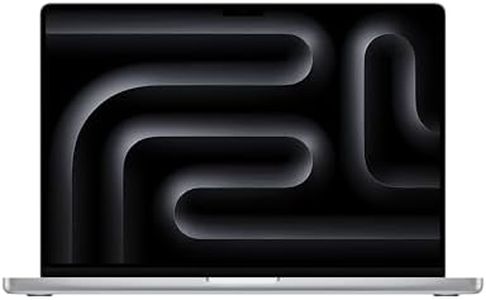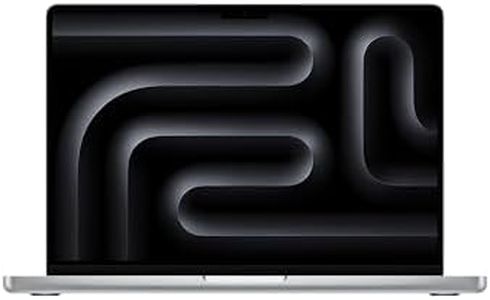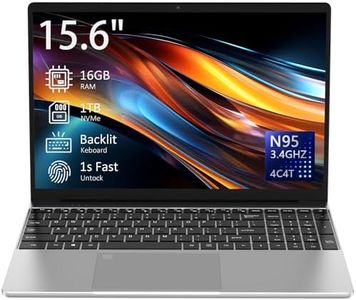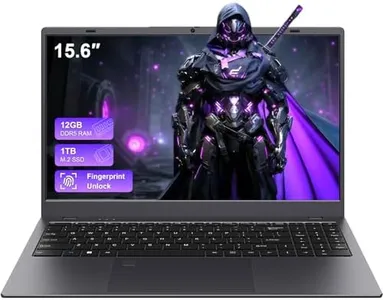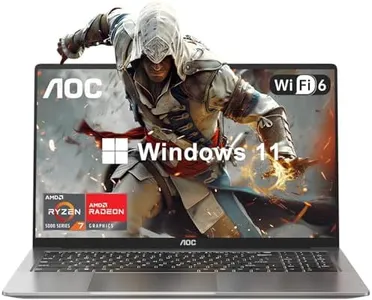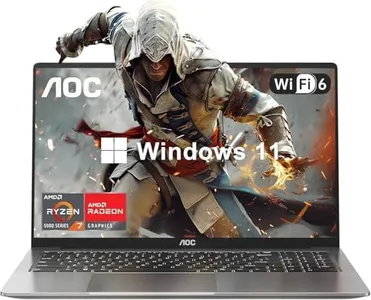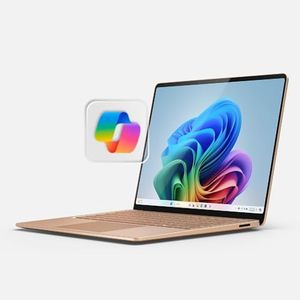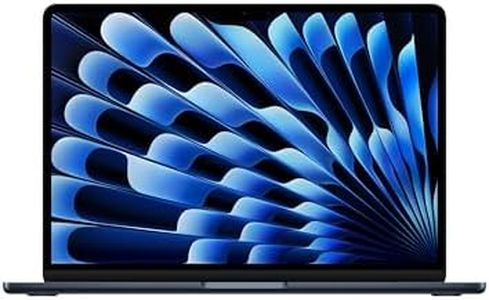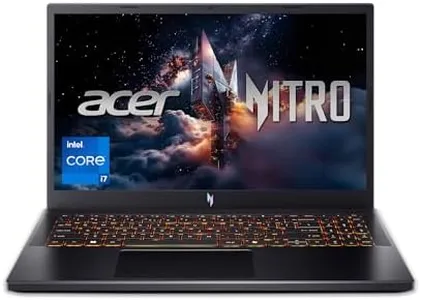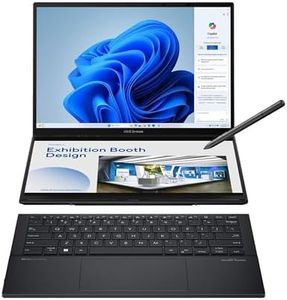10 Best Programming Laptops 2025 in the United States
Our technology thoroughly searches through the online shopping world, reviewing hundreds of sites. We then process and analyze this information, updating in real-time to bring you the latest top-rated products. This way, you always get the best and most current options available.

Our Top Picks
Winner
ASUS ROG Strix G16 (2025) Gaming Laptop, 16” ROG Nebula Display 16:10 2.5K 240Hz/3ms, NVIDIA® GeForce RTX™ 5070 Ti GPU, Intel® Core™ Ultra 9 275HX Processor, 32GB DDR5, 1TB SSD, Wi-Fi 7, Win11 Home
Most important from
353 reviews
The ASUS ROG Strix G16 (2025) is a powerful laptop equipped with a top-tier Intel Core Ultra 9 processor and a hefty 32GB of DDR5 RAM, making it more than capable of handling demanding programming tasks and multitasking without slowing down. Its 1TB PCIe Gen 4 SSD provides fast and ample storage, great for quick access to your files and projects. The 16-inch ROG Nebula display offers a sharp 2.5K resolution with a 16:10 aspect ratio, giving you extra vertical space for code and documents, which programmers often appreciate. The screen’s high refresh rate (240Hz) and low response time are more gaming-focused but can make overall screen interaction feel smooth. Running Windows 11 Home, it supports a wide range of programming tools and environments.
The laptop is on the heavier side at about 6 pounds and nearly 1 inch thick, which may limit portability if you plan to carry it around frequently. The keyboard is backlit and part of a customizable RGB setup, which looks cool but might be distracting; however, a Stealth Mode can turn off lighting for a more professional look. Its advanced cooling system keeps performance steady during heavy use, which is beneficial for extended programming work.
This laptop is well suited for programmers who want strong performance and excellent screen clarity and who don’t mind a bulkier device, especially if they also enjoy gaming or creative work.
Most important from
353 reviews
Apple 2024 MacBook Pro Laptop with M4 Pro, 14‑core CPU, 20‑core GPU: Built for Apple Intelligence, 16.2-inch Liquid Retina XDR Display, 24GB Unified Memory, 512GB SSD Storage; Silver
Most important from
520 reviews
The Apple 2024 MacBook Pro with M4 Pro is a robust option for programming with several strengths. It boasts a powerful 14-core CPU and a 20-core GPU, making it highly capable of handling demanding programming tasks, including compiling large codebases and running simulations. The 24GB of unified memory ensures smooth multitasking, and the 512GB SSD offers fast storage, though more space might be needed for larger projects and can be configured up to 4TB if necessary.
The 16.2-inch Liquid Retina XDR display is excellent for long coding sessions, providing clear and vibrant visuals with 1600 nits peak brightness and a high resolution. The battery life is impressive, offering up to 24 hours of video streaming and 17 hours of web usage, which is beneficial for extended work periods without needing a charge. The backlit Magic Keyboard and responsive Force Touch trackpad make for a comfortable typing experience, essential for coding marathons. macOS, the operating system, is optimized for performance and includes robust support for development tools and applications.
However, the integrated graphics, while capable, might not meet the needs of programmers working with intensive graphical computations or AI/ML projects that benefit from discrete GPUs. The laptop’s weight and size, at 4.71 pounds and 0.66 inches thick, make it relatively portable but might be on the bulkier side for some users. Connectivity is strong with multiple Thunderbolt 5 ports, an HDMI port, and an SDXC card slot, but some users might miss having more traditional USB-A ports. This MacBook Pro is particularly well-suited for developers who are deeply integrated into the Apple ecosystem and value seamless operation with other Apple devices. It offers excellent performance, a high-quality display, and commendable battery life, making it a solid choice for programming professionals.
Most important from
520 reviews
Apple 2025 MacBook Air 15-inch Laptop with M4 chip: Built for Apple Intelligence, 15.3-inch Liquid Retina Display, 16GB Unified Memory, 256GB SSD Storage, 12MP Center Stage Camera, Touch ID; Starlight
Most important from
1520 reviews
The Apple 2025 MacBook Air 15-inch with the new M4 chip is a strong choice for programming thanks to its powerful 10-core CPU and 16GB of unified memory, which help run multiple coding apps and tasks smoothly. The 256GB SSD offers fast storage access, but its capacity might feel tight if you keep many large projects or files locally, so external drives or cloud storage could be needed. The large 15.3-inch Liquid Retina display is sharp and colorful, making it easier on the eyes during long coding sessions and good for viewing detailed content.
Battery life is impressive, lasting up to 18 hours, which is ideal for working unplugged through a full day. The backlit Magic Keyboard and precise Force Touch trackpad provide a comfortable typing and navigation experience, both important for programming comfort. Weighing just over 3 pounds and under half an inch thick, it’s very portable for developers on the go. However, it has only two Thunderbolt 4 ports plus a MagSafe charger, which may require adapters if you use many peripherals.
Running macOS, it seamlessly integrates with other Apple devices and supports many popular programming tools, but if you rely on Windows-exclusive software, it may not be the best fit. This MacBook Air suits programmers who value speed, portability, and a great display, particularly those already in the Apple ecosystem, though storage and port options might require some compromises.
Most important from
1520 reviews
Buying Guide for the Best Programming Laptops
Choosing the right programming laptop is crucial for your productivity and comfort. The ideal laptop for programming should have a good balance of performance, portability, and battery life. It should be powerful enough to handle your development tasks, yet portable enough to carry around. Here are some key specifications to consider when selecting a programming laptop, along with explanations to help you make an informed decision.FAQ
Most Popular Categories Right Now

